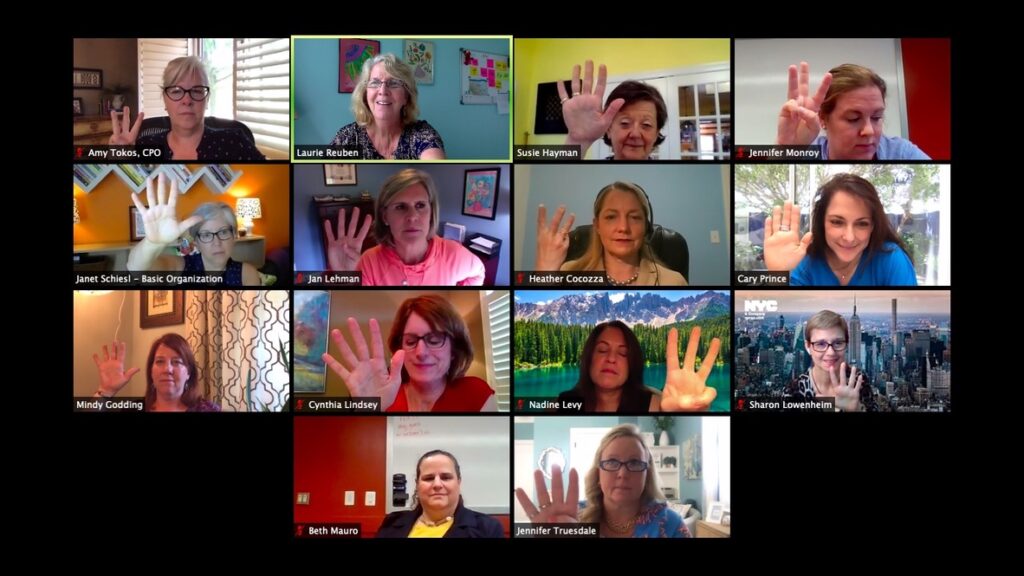5 More Ways to Make Your Virtual Conference Successful
 As I shared last time, the most important thing you can do to make your virtual conference or meeting successful is to designate a Roz: a producer who, like Roz on Frasier, manages the event behind the scenes. If you missed it, please read now about why you need a Roz — you need that info to take full advantage of today’s 5 tips.
As I shared last time, the most important thing you can do to make your virtual conference or meeting successful is to designate a Roz: a producer who, like Roz on Frasier, manages the event behind the scenes. If you missed it, please read now about why you need a Roz — you need that info to take full advantage of today’s 5 tips.
You’re back? Great. From my Roz experience, I’m offering 5 more ways to take advantage of the positive aspects of online conferences while minimizing the disadvantages.
1. Think beyond your usual audience.
A virtual meeting can be what we call in the South a “y’all come” event. The public relations society meeting I recently produced invited the association’s student organization. The students — who probably would not have been able to afford an in-person conference — brought a wonderful dynamic. They asked questions the seasoned professionals might have been thinking but wouldn’t ask. Remember, too, that geography doesn’t have to limit attendance — or speaker selection, for that matter.
2. Make specific assignments.
The conference committee members should have specific roles, just as they would for an in-person event. Besides those, make sure specific virtual meeting tasks get assigned to specific people. For example, if you want to “seed” audience questions, make sure that one or two people per speaker are designated as question-askers. Those same people can be responsible for getting screenshots.
3. Take care of your speakers.
Some speakers need more hand-holding than others, but all need individual attention. Your Roz should meet with each speaker a few days in advance to go over timing and tech issues. During the conference, set up a “green room” where speakers can meet Roz or a volunteer to be oriented to where we are in the program.
After the conference, thank speakers repeatedly! In addition to sending a heartfelt email, I recommend thanking speakers on LinkedIn and then following up about a week later with a LinkedIn endorsement, which can help them get new business. Again, assign one volunteer to each speaker. Roz can be the noodge.
4. Do something new with breaks.
Just like regular conferences, virtual meetings need what I call fluid adjustment breaks (empty one set of fluids, replenish another). Recreate the virtual conference experience by telling people you’ll be sending them to breakout rooms during the break. If they come back early, they can chat with whoever might be there.
Unlike regular conferences, virtual conferences produce Zoom fatigue. People are likely to need more or different kinds of processing time. A conference I recently produced introduced a 10-minute meditation break led by an experienced meditation teacher. Communal stretching or exercise breaks might also be appreciated.
5. Keep it engaging.
Every conference says it’s going to be interactive, but too many are not. Use every engagement tool you’ve got. When she meets with speakers in advance, Roz can help them think through the possibilities:
- Set up live polls where people can see how others are reacting.
- Use the chat box to elicit reactions to something the speaker has said and have Roz summarize what emerges.
- Solicit questions in chat.
- Set up a fun quiz or contest every hour or so. Conference sponsors can suggest questions and offer prizes.
Another key bit of advice on engagement: Be exactly as willing to air a pre-recorded video as you would be at an in-person conference, and for the same reasons. If we want to watch videos, we’ve got YouTube.

